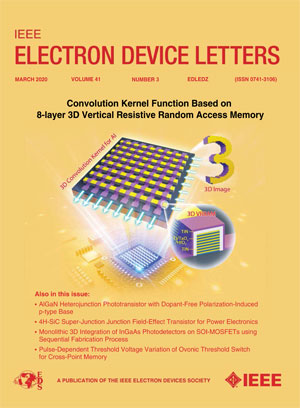了解电子引脚质子在低温以上的晶体管行为
IF 4.1
2区 工程技术
Q2 ENGINEERING, ELECTRICAL & ELECTRONIC
引用次数: 0
摘要
电子自旋量子比特是实现大规模量子计算机的最有前途的平台之一。这一要求意味着需要使用冷却时间较长的冰箱,并需要进行芯片封装,从而极大地限制了可同时测量的器件数量。在我们的工作中,我们评估了传统的晶体管指标,以实现在低温以上对电子自旋量子比特器件进行快速晶圆级筛选。据我们所知,在 2 K 以下测量的量子点指标与在更高温度下测量的传统晶体管指标之间尚未发现明确的联系。在这封信中,我们研究了 10 mK 少电子度量与不同温度下传统晶体管度量之间的相关性。我们观察到高达 77 K 的强相关性,而更高温度下的相关性则不那么明显。我们通过室温 TCAD 仿真分析了这种不明显的相关性,结果表明,在 77 K 以上,由于基底电流对器件关断电流有相当大的贡献,其基本物理原理发生了变化。本文章由计算机程序翻译,如有差异,请以英文原文为准。
Understanding the Transistor Behavior of Electron-Spin Qubits Above Cryogenic Temperatures
Electron-spin qubits are among the most promising platforms for the realization of a large-scale quantum computer. Physical limitations dictate their operation at cryogenic temperatures, in practice often well below 1 K. This requirement implies the employment of a refrigerator featuring long cooldown times and the need for die packaging, thereby strongly limiting the number of devices that can be measured simultaneously. In our work, we evaluate traditional transistor metrics to enable fast wafer-level screening of electron-spin qubit devices above cryogenic temperatures. To the best of our knowledge, a clear link between quantum dot metrics measured below 2 K and traditional transistor metrics measured at higher temperatures has not yet been identified. In this letter, we study the correlation between 10 mK measurements in the few-electron regime, and traditional transistor metrics at different temperatures. We observe a strong correlation up to 77 K, while correlations at higher temperatures are much less pronounced. We analyze this poor correlation via room-temperature TCAD simulations, showing that the underlying physics changes due to a considerable contribution of the substrate current to the device’s off current above 77 K.
求助全文
通过发布文献求助,成功后即可免费获取论文全文。
去求助
来源期刊

IEEE Electron Device Letters
工程技术-工程:电子与电气
CiteScore
8.20
自引率
10.20%
发文量
551
审稿时长
1.4 months
期刊介绍:
IEEE Electron Device Letters publishes original and significant contributions relating to the theory, modeling, design, performance and reliability of electron and ion integrated circuit devices and interconnects, involving insulators, metals, organic materials, micro-plasmas, semiconductors, quantum-effect structures, vacuum devices, and emerging materials with applications in bioelectronics, biomedical electronics, computation, communications, displays, microelectromechanics, imaging, micro-actuators, nanoelectronics, optoelectronics, photovoltaics, power ICs and micro-sensors.
 求助内容:
求助内容: 应助结果提醒方式:
应助结果提醒方式:


